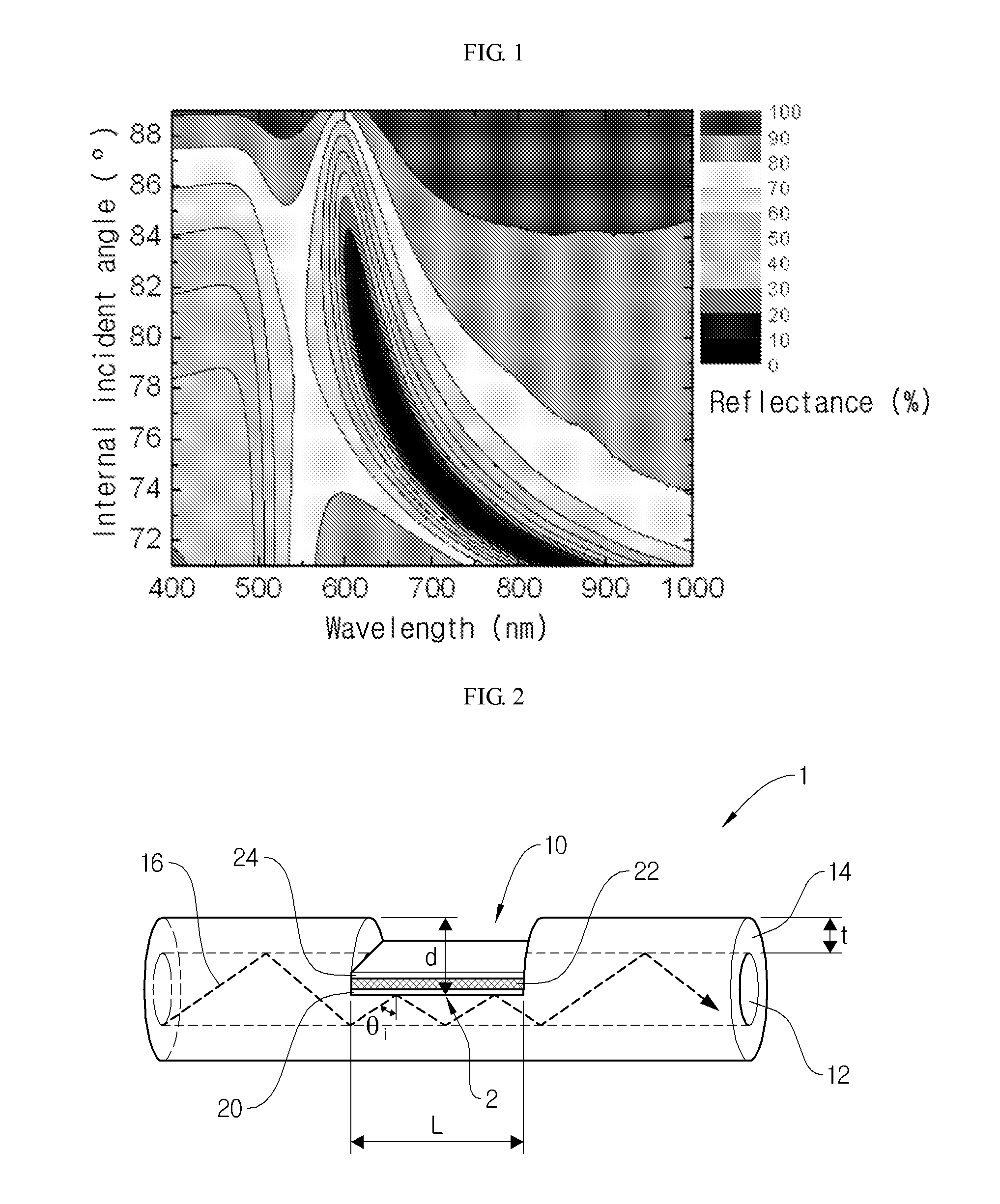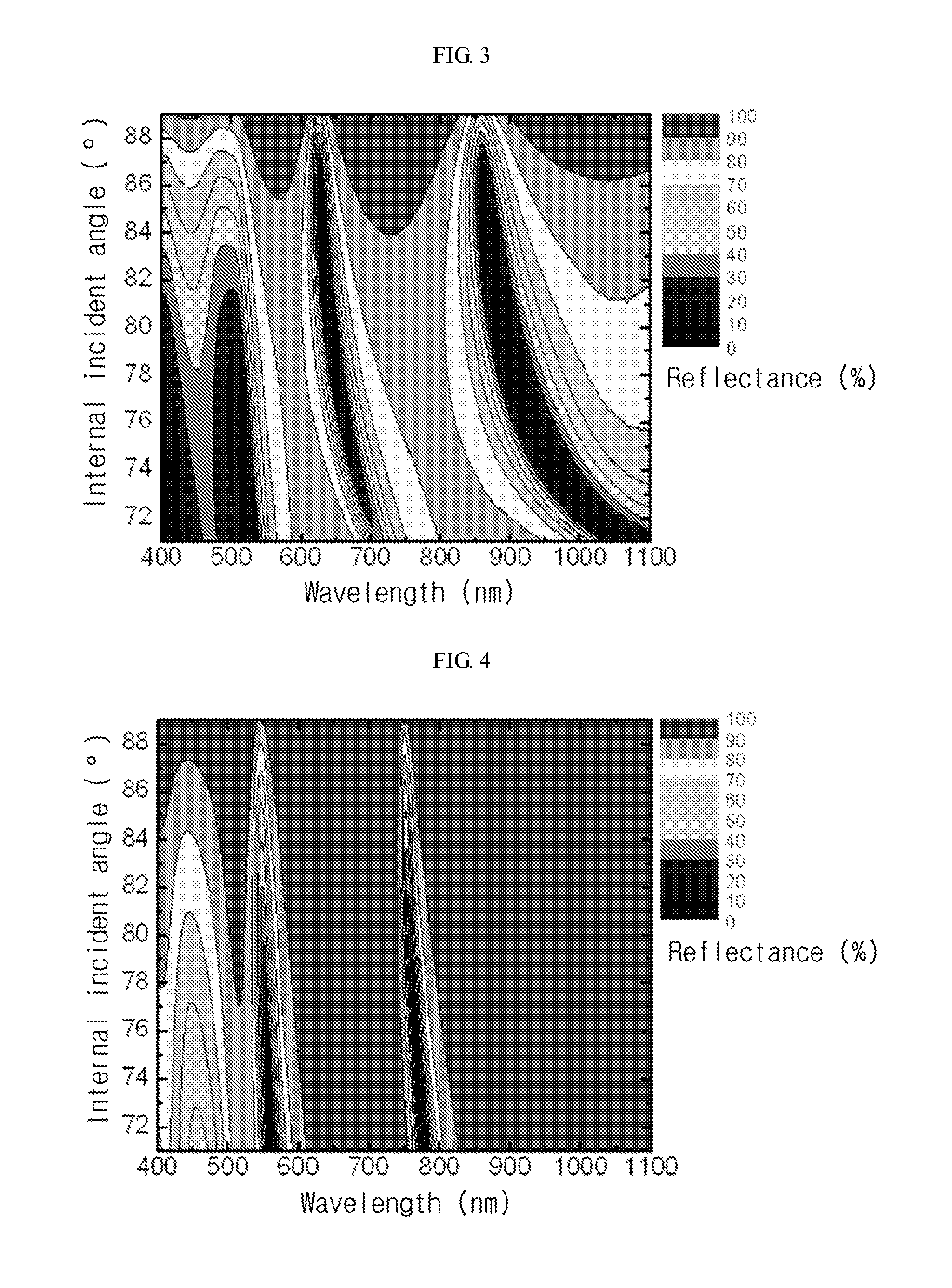Fiber-optic surface plasmon resonance sensor and sensing method using the same
a technology of surface plasmon and sensor, which is applied in the direction of instruments, cladded optical fibres, optical elements, etc., can solve the problems of high cost, inconvenient point-of-care diagnosis or remote sensing, complex system configuration, etc., and achieve excellent tunability of surface plasmon resonance wavelength, improve sensitivity of fiber-optic sensors, and increase the thickness of optical waveguide layers
- Summary
- Abstract
- Description
- Claims
- Application Information
AI Technical Summary
Benefits of technology
Problems solved by technology
Method used
Image
Examples
Embodiment Construction
[0031]Hereinafter, exemplary embodiments will be described in detail with reference to the accompanying drawings.
[0032]FIG. 2 schematically shows the configuration of a fiber-optic surface plasmon resonance sensor according to an exemplary embodiment.
[0033]Referring to FIG. 2, a fiber-optic surface plasmon resonance sensor according to an exemplary embodiment may include an optical fiber 1 and a surface plasmon excitation layer 2. The optical fiber 1 may include a core 12, a cladding 14 and a depression 10. The core 12 and the cladding 14 may extend along one direction, and the cladding 14 may be disposed to surround the core 12. The core 12 may include any material which is optically transparent at an operation wavelength. The cladding 14 may include any material whose refractive index is lower than the refractive index of the core 12.
[0034]The depression 10 may be formed on a side surface of the optical fiber 1, i.e. in a direction perpendicular to the length direction of the opti...
PUM
| Property | Measurement | Unit |
|---|---|---|
| internal incident angle | aaaaa | aaaaa |
| internal incident angle | aaaaa | aaaaa |
| surface plasmon resonance wavelength | aaaaa | aaaaa |
Abstract
Description
Claims
Application Information
 Login to View More
Login to View More - R&D
- Intellectual Property
- Life Sciences
- Materials
- Tech Scout
- Unparalleled Data Quality
- Higher Quality Content
- 60% Fewer Hallucinations
Browse by: Latest US Patents, China's latest patents, Technical Efficacy Thesaurus, Application Domain, Technology Topic, Popular Technical Reports.
© 2025 PatSnap. All rights reserved.Legal|Privacy policy|Modern Slavery Act Transparency Statement|Sitemap|About US| Contact US: help@patsnap.com



